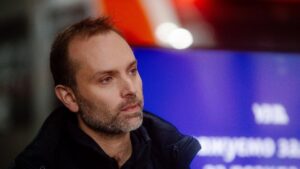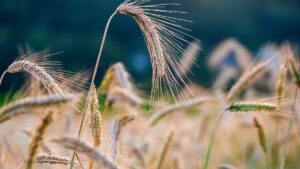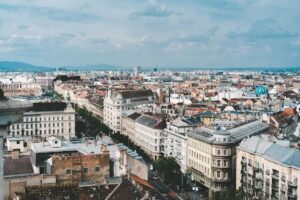
“To ensure sustainable operations in 2026, Ukrzaliznytsia (UZ) must cover a liquidity deficit of around UAH 48.8 billion, excluding the repayment of Eurobonds, whose debt is to be restructured,” said CEO Oleksandr Pertsovsky on Friday during a presentation on passenger transport financing and the model for launching the UZ-3000 program.
“We have chosen the most balanced model to cover this deficit: part of it will be provided by our internal optimization, part by tariff decisions, and the third part by state support for passenger transport. There are no other realistic ways to get through these years in the context of the war,” he emphasized.
According to him, the amount of state co-financing for passenger transport will amount to up to UAH 13 billion in 2025 and will increase to more than UAH 16 billion in 2026.
According to Pertsovsky, operating losses in passenger transport total UAH 24 billion per year (UAH 13 billion for long-distance transport and UAH 11 billion for local transport), and while it was previously possible to offset these losses at the expense of profits in freight transport, this is impossible during the war.
According to the presentation, the expected loss in the passenger transport segment will increase from UAH 18.1 billion last year to UAH 18.6 billion this year, UAH 21.9 billion next year, and UAH 24.4 billion in 2027.
Suburban transport is expected to lose UAH 10.9 billion next year, domestic transport UAH 13.4 billion, and only international passenger transport will be profitable, with UAH 2.4 billion.
At the same time, UZ forecasts that profits from freight transport will decline from UAH 20.4 billion last year to UAH 3.2 billion this year, with a loss of UAH 0.6 billion next year, increasing to UAH 4.8 billion in 2027.
The reasons for this change in the profitability of freight transport are a reduction in volume (coal – by 4 million tons, grain – by 9 million tons after the artificial peak in 2024) and a reduction in transport distances, resulting in a loss of UAH 14.5 billion in freight revenue, as well as rising costs (personnel, electricity, financial costs) with frozen tariffs, which means an additional UAH 2.7 billion in expenses.
According to the presentation, the projected net loss for next year is UAH 28.64 billion.
In addition, the company expects UAH 25.4 billion in critical restructuring costs with depreciation of UAH 15.9 billion, UAH 6.4 billion in interest payments on Eurobonds, and UAH 4.2 billion in repayments of EBRD and EIB loans, which together result in a liquidity deficit of UAH 48 billion, according to the presentation.
As part of its own optimization, UZ has proposed an economic effect of almost UAH 17 billion in 2026, of which UAH 6.7 billion has already been taken into account in the draft financial plan. A further UAH 10.2 billion is to be achieved by reducing administrative costs, transferring non-core assets, cooperating with the freight market, and increasing its own revenues.
According to the presentation, the optimization measures include the elimination of 69 of the most unprofitable suburban routes (up to 5,000 per day), the indexation of unregulated elements (commissions, services), and flexible dynamic pricing for individual segments, which are expected to generate a total of UAH 6.9 billion.
In addition, there are plans to optimize the workforce by 8,300 employees, merge regional railways, and optimize up to 1,200 km (less than 5%) of the network with no or minimal traffic (1-2 suburban pairs).
Energy efficiency measures also include operating during intervals with the lowest fares, doubling rental income (+UAH 100 million), the sale of surplus and non-core assets, the sale of scrap metal (over 370,000 tons, which is more than UZ has sold in the last 5 years and secures the company a 28% share of the scrap market), and reducing repairs to passenger cars, regional trains, and infrastructure.
Ukrzaliznytsia points out that the financing model for passenger transport is in line with the European practice of public service obligation (PSO), whereby the state covers the difference between economically justified costs and tariffs.
Earlier this week, Serhiy Leshchenko, deputy chairman of the UZ supervisory board, told the Verkhovna Rada that the company’s net loss for the first nine months of this year amounted to UAH 7.195 billion.
According to him, UZ proposes to index freight tariffs by 27.5% from January 1 next year and by another 11% from July 1.
In January-June 2025, UZ’s export traffic decreased by 13.5% to 38.7 million tons, domestic traffic decreased by 11.7% to 35.5 million tons, while import traffic increased by 5.4% to 5.3 million tons.
Passenger traffic increased by 1.2% to 13.52 million in the first half of 2025.
In 2024, UZ increased its revenue by 11.1% to UAH 102.87 billion, but reported a net loss of UAH 2.71 billion, compared to a net profit of UAH 5.04 billion in 2023.

The Ministry of Economy, Environment, and Agriculture forecasts a 6% increase in harvest in 2025 compared to last year due to an increase in grain crops, said Minister of Economy, Environment, and Agriculture Oleksiy Sobolev.
“Overall, this year’s harvest is expected to be slightly higher — about 6% higher than last year. The growth will be primarily due to grain crops — approximately 59 million tons are expected, compared to 56 million tons last year,” he said in an interview with Forbes Ukraine.
The oilseed harvest will remain at last year’s level. We expect a harvest of about 79 million tons of grain and oilseeds combined.
The minister noted that farmers sowed 4.8 million tons of winter crops this year (74% of the forecast) and harvested 37.6 million tons of grain (73% of all sown areas).
He emphasized that in 2025, the harvest in Ukraine will be collected later. This is reflected in the skewed GDP growth in the second half of the year, as part of the money that went into the first half of the year will go into the second half due to weather conditions.

In Q2 2025, average housing prices in Hungary rose by 17.9% year-on-year and 5.1% quarter-on-quarter according to the aggregate index of the National Bank of Hungary. In Budapest, the increase was 23.1% year-on-year and 6.3% quarter-on-quarter, in cities outside the capital – 18.7% year-on-year and 5.9% quarter-on-quarter, in rural areas – 10.7% year-on-year and 2.8% quarter-on-quarter, according to the latest issue of the MNB House Price Index for Q2.
According to Eurostat, in Q2 2025, the aggregate housing price index in the EU rose by 5.4% y/y and 1.6% q/q, indicating that Hungary is outperforming the European average. At the same time, the number of housing transactions in Hungary fell by 5.7%, indicating rising prices amid declining activity.
In Q1 2025, the MNB recorded double-digit price growth both nationally and in the capital, against the backdrop of a revival in mortgage lending and a number of subsidized programs.
The acceleration of prices in the second quarter in the capital and major cities, accompanied by a decline in transactions, points to a market where demand is mainly sustained by improvements in real household incomes and supportive measures, as well as a shift in supply from short-term rentals to long-term formats amid increasing regulation, especially in Budapest.
The baseline scenario for Q4 2025 is a slowdown in growth to 3-4% q-o-q nationwide and 4-5% q-o-q in Budapest amid seasonality and partial profit-taking. A more moderate trajectory is expected for 2026: 6–9% y-o-y nationwide and 8–11% y-o-y in the capital, provided that support programs and stable rates are maintained. Risks of a slowdown include a possible tightening of mortgage conditions and a slowdown in real incomes; risks of acceleration include the expansion of subsidized mortgages and additional restrictions on short-term rentals in tourist areas. The assessment is based on the dynamics of the MNB index, Eurostat statistics on transactions, and reports from the regulator on income support policy.

On the night and morning of November 10, fog with visibility of 200-500 m (level I hazard, yellow) is expected in Ukraine, except for the northern part of the country, according to the Ukrainian Hydrometeorological Center.
“Weather conditions may complicate traffic,” the report said.

According to Serbian Economist, the Serbian parliament has passed a special law that accelerates preparations for the development of the site of the former Yugoslav National Army General Staff Headquarters in central Belgrade, which was damaged by NATO strikes in 1999. The developer is Affinity Global Development, an investment company founded by US President Donald Trump’s son-in-law Jared Kushner.
The project, worth about $500 million, involves the construction of a hotel, apartments, offices, and retail space, as well as a memorial space for the victims of the bombing.
A 99-year lease agreement with the Serbian government was signed in May 2024. In November 2024, the site was stripped of its protected cultural heritage status, paving the way for the project to go ahead. The adopted lex specialis simplifies and speeds up the issuance of permits and other administrative procedures, the authorities noted.
The opposition and relevant organizations criticize the decision, citing the cultural value of the complex and legal risks. Europa Nostra has included the General Staff Headquarters in its list of the seven most vulnerable European heritage sites of 2025. Radio Liberty notes that the law was passed with the votes of the ruling party, despite protests and an investigation into possible falsification of the document used to remove the protective status.
Affinity Global Development’s public statements and official communications do not mention the hotel brand, number of rooms, number of floors, room area, parking, or exact completion date. International agencies limit themselves to describing the functional mix without specifications. When official materials on the TEP and branding appear, the editorial staff of Serbian Economist will clarify the data.
The government is promoting the project as an investment and revitalization of Belgrade’s central location. Critics believe that the demolition and new construction will damage the modernist legacy of architect Nikola Dobrovic and the public memory of the events of 1999.
https://t.me/relocationrs/1705

US President Donald Trump has said that representatives of his administration will not participate in the G20 summit, which will take place on November 22-23, 2025, in Johannesburg, citing “violations of the rights” of white South Africans. He announced this on the social network Truth Social, and his position has been reported by leading publications.
According to Trump, holding G20 meetings in South Africa is a “disgrace,” and the country’s authorities allow the murder and illegal seizure of land from Afrikaners. The South African side called such statements unfounded and “regretted” the US decision.
South Africa will chair the G20 in 2025, with a leadership meeting scheduled for November 22-23 in Johannesburg.
The Trump administration has previously signaled a tough stance on South Africa, including public statements on the situation surrounding white farmers, which have been criticized by the expert community and South African officials.
boycott, G20, SOUTH AFRICA, SUMMIT, US